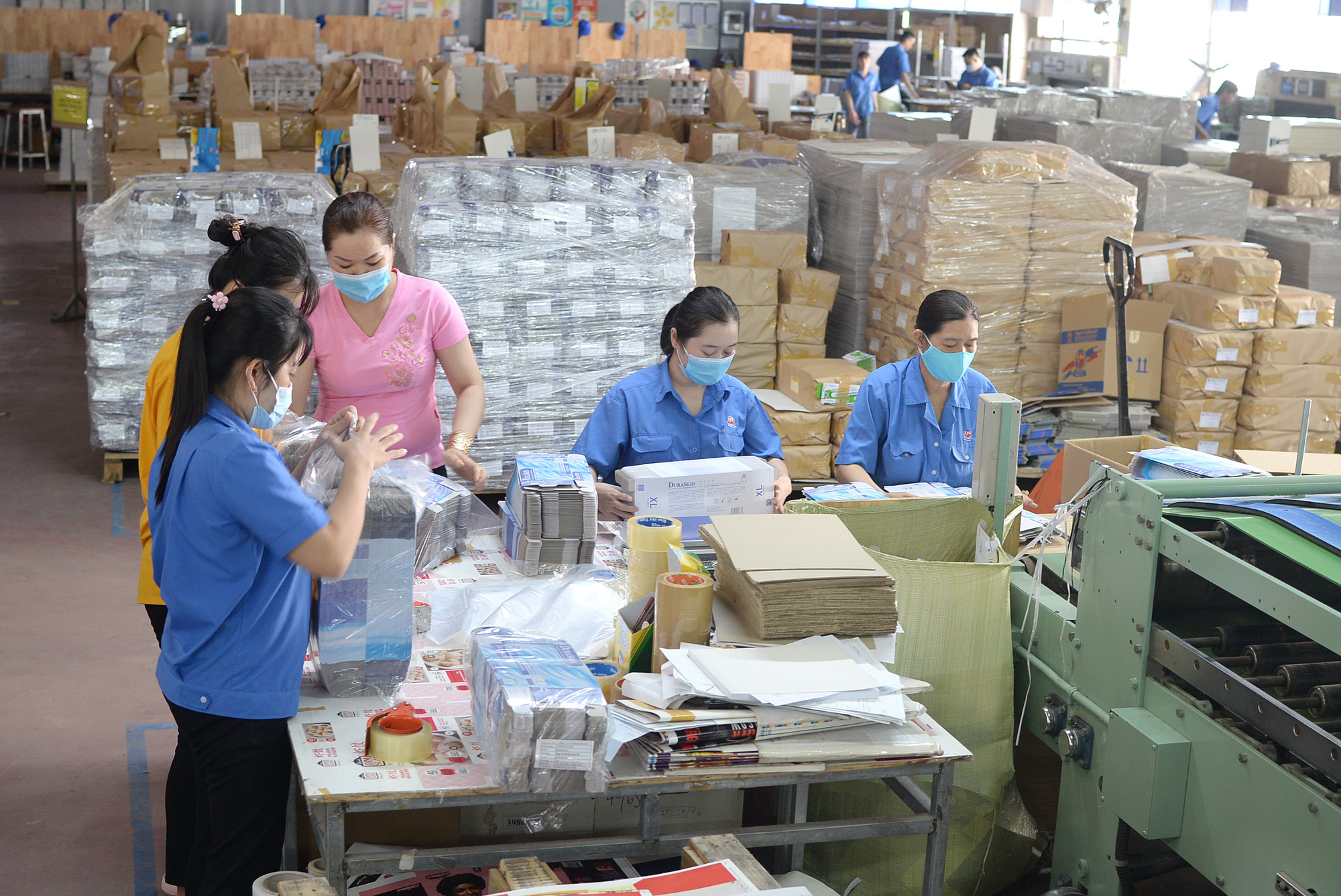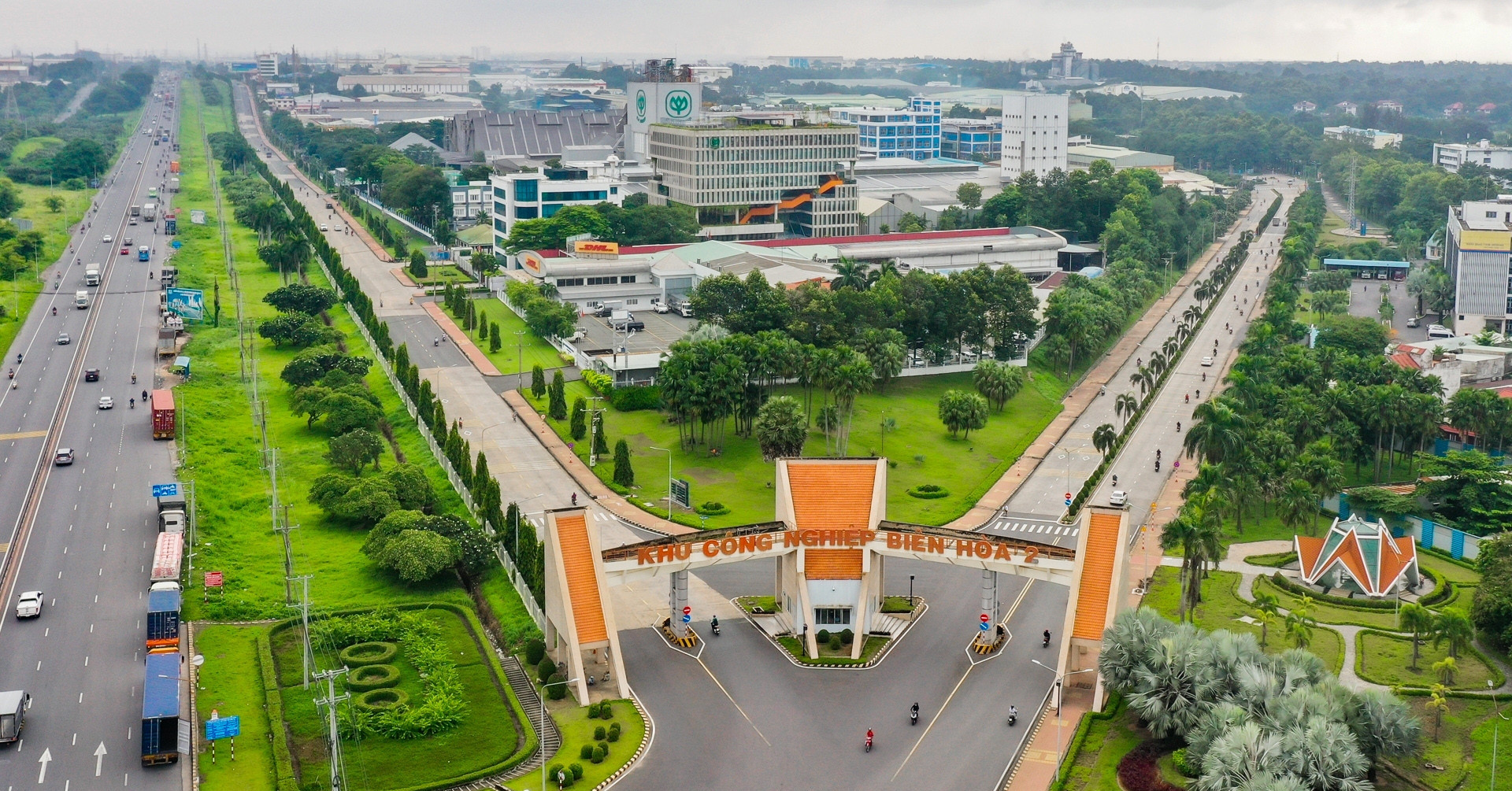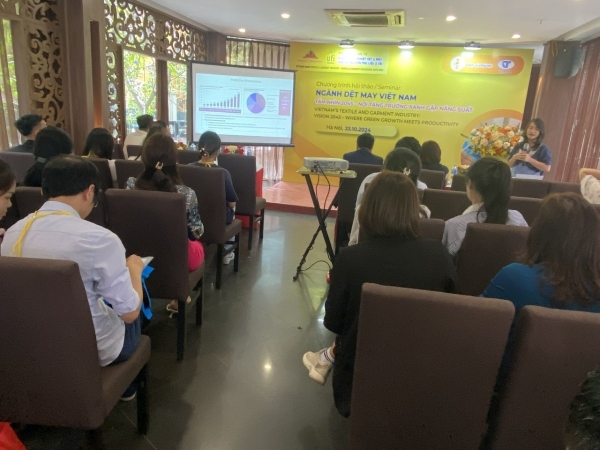
Workers work at a factory in Tan Tao Industrial Park, Ho Chi Minh City - Illustration photo: TTD
This was raised at the recent National Labor Productivity Improvement Forum. Tuoi Tre recorded the opinions of experts and managers on how to solve the problem of increasing labor productivity.
* Ms. DANG NGOC THU THAO (Operations Director, Outsourcing and Labor Leasing Services in the North, ManpowerGroup Vietnam):
Flexible hours, work and rest

Many workers do not follow the schedule, check in, eat breakfast, drink tea, do not like close supervision, and work and rest at the same time.
Due to lack of sanctions, a part of businesses have the mindset of "working here forever, no need to worry about unemployment", lack motivation to contribute, working is fine, not working is fine too.
Many businesses do not have incentive mechanisms that make workers feel that working a lot or a little is the same.
The fact that employees do not comply with the time limit, or arrive but do not work, is primarily due to management and leadership. Agencies and businesses should include content on discipline and workplace conduct in the training content for new employees as well as general company rules, with clear monitoring and reward and punishment mechanisms.
On the other hand, there should be other regulations such as dress code, phone use, personal matters during working hours...
The purpose of these regulations is not to put pressure on workers but to encourage and motivate them to strive.
* Mr. DINH SY PHUC (Chairman of the union of Taekwang Vina Joint Stock Company, Dong Nai, with over 34,000 people):
Changes from greetings to dress

To increase labor productivity, it is necessary to first divide the training groups, identify the causes and make changes step by step.
As a senior management team, the core is enhanced in management capacity, learning science and technology at large corporations, and exchanging with experts.
Next, the group of employees and mid-level workers are guided and standardized according to the process and working steps, saving time, shortening the working steps depending on their capacity and evaluating their capacity, efficiency, and surrounding impact for improvement.
Next, the group of employees and general workers are taught industrial manners, standards, and culture from simple things like greeting, dressing neatly, working quickly, and being punctual...
Every business wants to improve labor productivity and is willing to invest in modern machinery and improved tools, but workers must be willing to change, maintain their working style, and contribute to the company.
* Prof. Dr. GIANG THANH LONG (senior lecturer, National Economics University):
Reduce stress to increase productivity

Research shows that improving mental health immediately increases labor productivity, mainly from high value-added industries, such as information technology, artificial intelligence (AI)...
For labor-intensive industries such as textiles, footwear, and leather, a roadmap and solutions are needed to pilot each industry and each company with specific conditions.
Only when labor force is regenerated can labor productivity be increased. In developed countries, high labor productivity is calculated to reduce stress and depression for workers.
We need to take advantage of the young workforce, increase the proportion of trained, skilled, and qualified workers, meet the needs of the labor market, and create jobs for those who have lost their jobs. In the long term, authorities need to mobilize and attract workers to participate in social insurance, create a long-term security support, reduce anxiety and health and employment risks, and indirectly increase labor productivity.
* Dr. PHAM THU LAN (Deputy Director of the Institute for Workers and Trade Union Research)
Work motivation linked to benefits

Salary, bonus, and benefits are directly proportional and closely related to work motivation, satisfaction, and dedication to work. Although they want to stick with it, few people stay in low-paying companies, leading to a job-hopping rate of 8-12%/month in industries with a large workforce.
If a company has 1,000 workers but 100 workers come and go every month, the company will spend a lot of time, effort, and money on advertising, recruiting, and training employees. This cost is saved to increase labor productivity.
In the long term, it is necessary to establish a satisfactory minimum wage for workers to cover basic needs such as nutrition, housing, health, transportation, education, social relations, and future planning or savings. Promote gender equality in income for jobs of equal value. Accelerate policies and welfare for housing, schools, hospitals, etc.
* Mr. LE DINH QUANG (Deputy Head of Policy and Law Department, Vietnam General Confederation of Labor):
Manage more effectively

To improve labor productivity, improving the skills, expertise, and discipline of workers is only one factor. Other factors such as investment in machinery and automation of production lines also contribute greatly. Therefore, a comprehensive solution is needed to improve labor productivity.
Specifically, it is necessary to reform the labor structure in the direction of promoting the shift of labor from the agricultural sector to the industrial and service sectors. Enterprises also need to promote investment in science, technology, machinery and equipment, and production lines.
In addition, it is necessary to change business administration and labor management in a more effective direction. In addition, it is necessary to train and improve the skills and expertise of workers.
6 reasons why Vietnam's labor productivity is still low

Minister of Planning and Investment NGUYEN CHI DUNG
In the past three years, the labor productivity growth rate has continuously failed to meet the target set in Resolution 01 of the Government.
From 2021 to 2023, Vietnamese labor productivity will only increase by an average of about 4.35% per year, lower than the average increase of about 6.05% per year in the 2016 - 2020 period.
In the ASEAN region, Vietnam's labor productivity is only higher than that of Cambodia and Myanmar and equivalent to that of Laos.
There are 6 reasons leading to low labor productivity of Vietnamese people:
1. The process of restructuring economic sectors is still slow, the labor structure by economic sector is not reasonable.
Laborers working in the agriculture, forestry and fishery sector accounted for nearly 27% in 2023, but labor productivity was only equivalent to more than 44% of the overall labor productivity of the entire economy.
2. Lack of synchronization in developing industrial value chains, not yet exploiting the competitive advantages of industrial sectors according to spatial distribution; processing and manufacturing industries are still in stages with low added value in the global value chain; using a lot of resources and labor, and receiving technology transfer is still limited.

Source: synthesis - Graphics: N.KH
3. Most domestic enterprises are small and medium-sized, have limited capital resources, limited ability to invest in technology, weak production management experience and low competitiveness.
4. The human resource training system still has many limitations, the labor training structure is still unreasonable, high-quality labor is still low compared to the requirements of socio-economic development. The rate of trained labor with degrees and certificates is still low, reaching 27.2% in 2023.
5. Investment in science, technology and innovation is still modest. The national expenditure on research and development is only 0.4% of GDP, ranking 70th in the world, quite low compared to other countries.
6. Vietnam has made many efforts to reform and improve economic institutions, contributing to creating more momentum for the economy. However, there are still some institutional bottlenecks that have affected the process of economic restructuring and growth model innovation.
Market economic institutions are still lacking in synchronization, especially for the labor market, technology market, and real estate market.
Minister of Planning and Investment NGUYEN CHI DUNG
Source: https://tuoitre.vn/tang-nang-suat-lao-dong-bat-dau-tu-chuyen-di-tre-ve-som-20240616083811473.htm


![[Photo] National Assembly Chairman Tran Thanh Man attends the Policy Forum on Science, Technology, Innovation and Digital Transformation](https://vstatic.vietnam.vn/vietnam/resource/IMAGE/2025/4/13/c0aec4d2b3ee45adb4c2a769796be1fd)

![[Photo] National Assembly Chairman Tran Thanh Man attends the ceremony to celebrate the 1015th anniversary of King Ly Thai To's coronation](https://vstatic.vietnam.vn/vietnam/resource/IMAGE/2025/4/13/6d642c7b8ab34ccc8c769a9ebc02346b)


![[Photo] Prime Minister Pham Minh Chinh chairs the Government's special meeting on law-making in April](https://vstatic.vietnam.vn/vietnam/resource/IMAGE/2025/4/13/8b2071d47adc4c22ac3a9534d12ddc17)



























































































Comment (0)